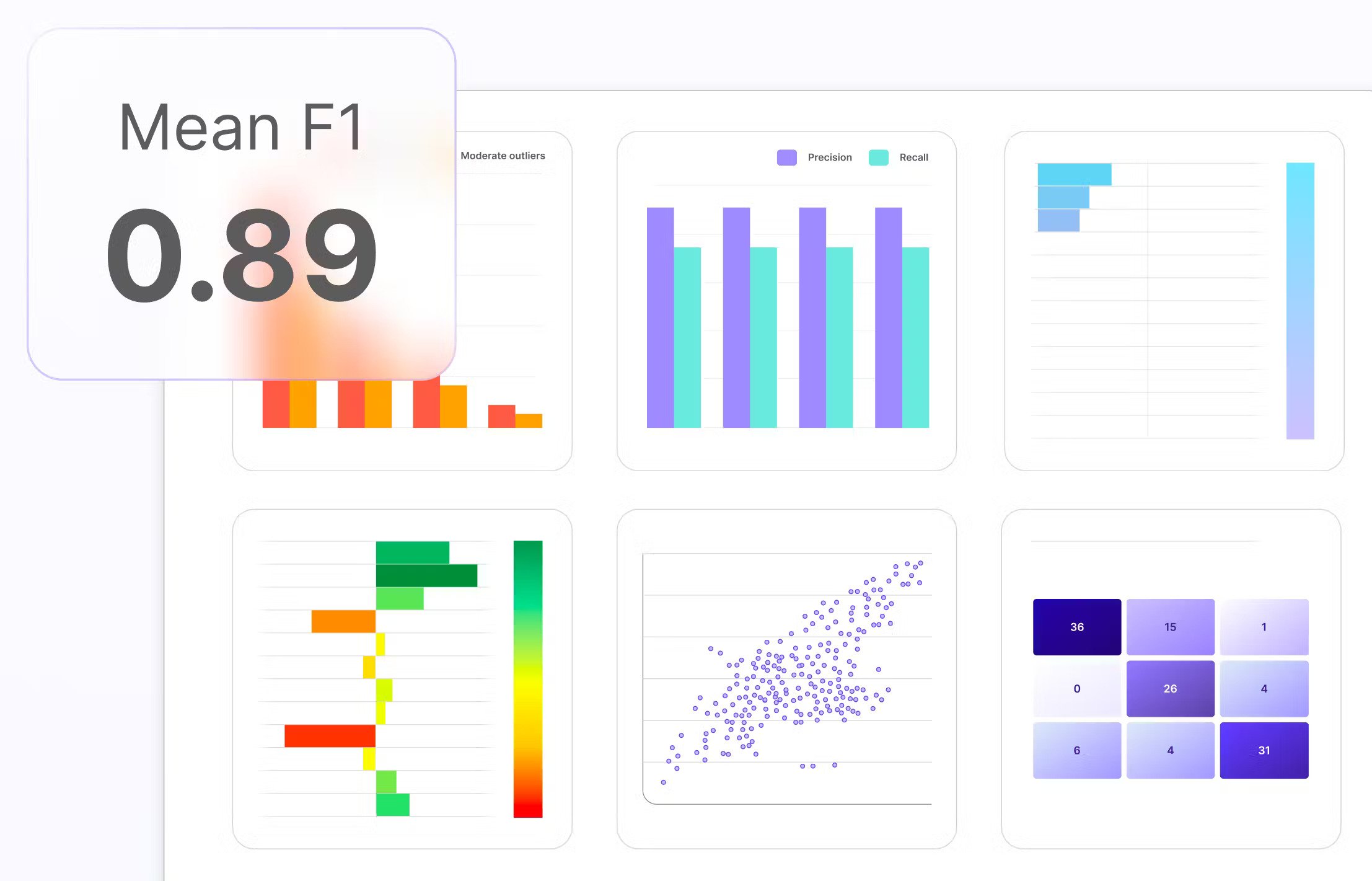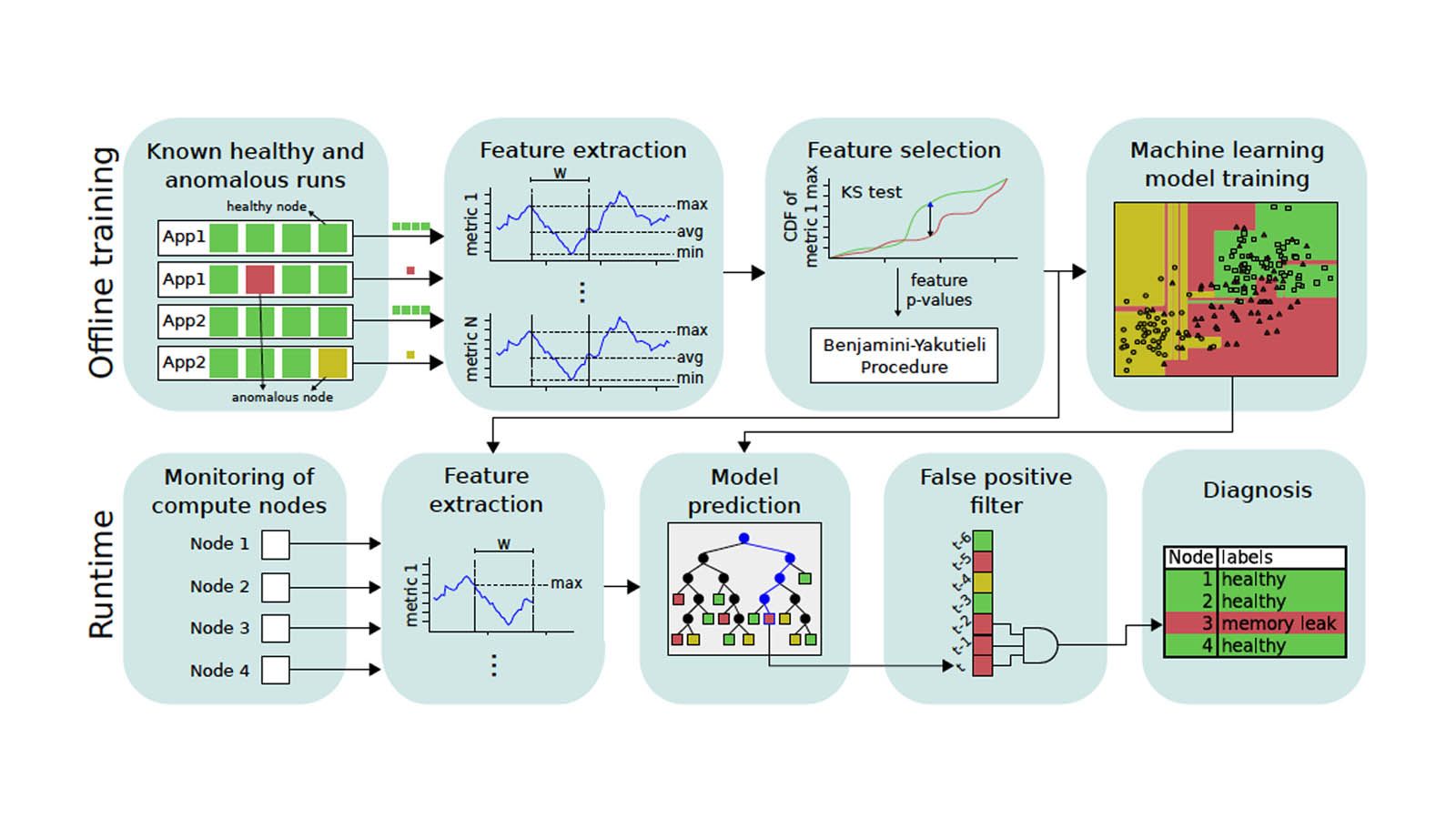Introduction
As the field of machine learning continues to advance, there are various evaluation metrics that data scientists rely on to measure the performance and accuracy of their models. One such metric is AUC-ROC, which stands for Area Under the Receiver Operating Characteristic Curve. AUC-ROC is widely used in classification problems and provides valuable insights into the model’s ability to distinguish between different classes.
In this article, we will explore the concept of AUC-ROC in machine learning, its components, how it is calculated, and how it is interpreted. Additionally, we will discuss the advantages and limitations of AUC-ROC and compare it to other evaluation metrics such as accuracy. Finally, we will delve into the practical applications of AUC-ROC in model evaluation.
AUC-ROC is particularly important in binary classification tasks, where the goal is to classify instances into one of two classes. For example, in medical diagnosis, a model might be trained to classify patients as either having a certain disease or not. AUC-ROC provides a quantitative measure of the model’s ability to correctly identify instances from both classes.
The AUC-ROC metric is derived from two key components – AUC (Area Under the Curve) and ROC (Receiver Operating Characteristic). These components work together to provide a comprehensive evaluation of the model’s performance.
Overall, understanding AUC-ROC is crucial for machine learning practitioners seeking to evaluate and compare the performance of different models. By analyzing the AUC-ROC scores, data scientists can make informed decisions about the effectiveness of their models and make any necessary adjustments to improve predictive accuracy. Now, let’s dive into the details of AUC-ROC and discover how it functions in machine learning.
Definition of AUC-ROC
AUC-ROC, which stands for Area Under the Receiver Operating Characteristic Curve, is an evaluation metric used to measure the performance of a classification model. It quantifies how well a model can distinguish between different classes by plotting the trade-off between true positive rate (TPR) and false positive rate (FPR) at various classification thresholds.
The ROC curve is a graphical representation of the model’s performance, and it is created by plotting the TPR against the FPR. The TPR, also known as sensitivity or recall, represents the proportion of true positive instances that are correctly identified, while the FPR represents the proportion of false positive instances that are incorrectly identified.
AUC, short for Area Under the Curve, refers to the area enclosed by the ROC curve. The AUC-ROC score ranges from 0 to 1, with a higher value indicating better performance. An AUC-ROC score of 0.5 indicates that the model’s performance is no better than random guessing, while a score of 1 indicates perfect classification accuracy.
It is important to note that AUC-ROC is applicable to both balanced and imbalanced datasets. Unlike accuracy, which can be misleading when the classes are imbalanced, AUC-ROC provides a more comprehensive evaluation of the model’s performance, particularly in scenarios where the distribution of classes is skewed.
In summary, AUC-ROC is a metric used to assess the performance of a classification model. It combines the concepts of TPR and FPR to measure the model’s ability to correctly classify instances from different classes. The AUC-ROC score indicates the area under the ROC curve and ranges from 0 to 1. By analyzing this score, data scientists can gain insights into the discriminative power and overall effectiveness of their models. Let’s now explore the components of AUC-ROC in more detail.
Understanding the Components: AUC and ROC
To grasp the concept of AUC-ROC, it is essential to understand its two key components: AUC (Area Under the Curve) and ROC (Receiver Operating Characteristic).
The Receiver Operating Characteristic (ROC) curve is a graphical representation of the model’s performance. It is created by plotting the True Positive Rate (TPR) against the False Positive Rate (FPR) at various classification thresholds. The TPR, also known as sensitivity or recall, is the proportion of true positive instances that are correctly identified, while the FPR is the proportion of false positive instances that are incorrectly identified.
AUC, which stands for Area Under the Curve, refers to the area enclosed by the ROC curve. It is a scalar value ranging from 0 to 1 that quantifies the model’s performance. A high AUC value indicates an excellent classification ability, while a low value suggests poor performance.
The ROC curve provides valuable insights into the model’s ability to separate the positive and negative instances across different thresholds. For each threshold, the TPR and FPR values are computed, and the corresponding point is plotted on the curve. By examining the shape and trajectory of the ROC curve, we can determine the model’s discriminatory power. A curve that closely hugs the top-left corner indicates high accuracy, while a curve that closely resembles a straight line from the bottom-left to the top-right represents a random or ineffective model.
The AUC value further summarizes the performance of the model. It represents the probability that a randomly chosen positive instance will be ranked higher than a randomly chosen negative instance. In other words, it quantifies the ability of the model to rank instances correctly. An AUC value of 0.5 suggests random guessing, while a value of 1 indicates perfect classification.
It is important to note that AUC-ROC is a model evaluation metric that is independent of the classification threshold. This means that it takes into account all possible thresholds and provides a comprehensive assessment of the model’s performance across different scenarios.
Understanding the components of AUC and ROC is crucial for interpreting and evaluating the performance of a machine learning model. By analyzing the ROC curve and AUC value, data scientists can gain insights into the model’s ability to discriminate between different classes. Let’s now explore how AUC-ROC scores are calculated.
How AUC-ROC is Calculated
The AUC-ROC (Area Under the Receiver Operating Characteristic Curve) score is calculated by measuring the area enclosed by the ROC curve. This score quantifies the model’s ability to distinguish between different classes.
To compute the AUC-ROC, the following steps are typically followed:
1. Collect the model’s predicted probabilities: Before calculating the AUC-ROC, the model’s predicted probabilities for each instance in the dataset are obtained. These probabilities represent the model’s confidence in assigning a particular class to an instance.
2. Rank the instances based on predicted probabilities: The instances in the dataset are sorted in descending order based on their predicted probabilities. This ranking is important to determine the order in which the instances will be examined when calculating the TPR and FPR.
3. Calculate the True Positive Rate (TPR) and False Positive Rate (FPR): Starting with the highest predicted probability threshold, the TPR and FPR are computed for each instance. The TPR is the proportion of true positive instances that are correctly classified, and the FPR is the proportion of false positive instances that are incorrectly classified.
4. Create the ROC curve: Plotting the TPR against the FPR at each threshold creates the ROC curve. Each point on the curve represents a different classification threshold, and the shape of the curve demonstrates the model’s performance across these thresholds.
5. Calculate the AUC: Lastly, the AUC is computed by measuring the area under the ROC curve. This area encapsulates the model’s performance across all classification thresholds. The AUC value ranges from 0 to 1, where 0.5 represents a random model and 1 represents a perfect classifier.
It is important to note that calculating the AUC-ROC requires labeled data, as the true class labels are needed to determine the true positives and false positives at each threshold. Additionally, some machine learning libraries and frameworks provide built-in functions to calculate the AUC-ROC score, simplifying the process for data scientists.
By understanding how the AUC-ROC score is calculated, data scientists can gain insights into the model’s performance and its ability to differentiate between classes. Let’s now move on to interpreting the AUC-ROC scores and understanding their significance.
Interpreting AUC-ROC Scores
Interpreting the AUC-ROC (Area Under the Receiver Operating Characteristic Curve) scores is crucial for understanding the performance of a classification model. The AUC-ROC score provides insights into the model’s ability to distinguish between different classes.
AUC values generally range from 0 to 1, with 0.5 indicating a random model and 1 representing a perfect classifier. The interpretation of AUC-ROC scores can vary based on the specific problem domain and data characteristics. However, the following general guidelines can be helpful:
1. AUC-ROC Score > 0.5: A score greater than 0.5 indicates that the model has better-than-random predictive ability. The higher the AUC-ROC score, the better the model’s ability to distinguish between classes. A score of 0.5 suggests that the model’s performance is no better than random guessing.
2. AUC-ROC Score = 0.5: A score of exactly 0.5 signifies that the model’s predictions are random or equivalent to flipping a coin. In this case, the model does not possess any discriminatory power.
3. AUC-ROC Score < 0.5: Occasionally, a model may yield an AUC-ROC score lower than 0.5. This indicates that the model's predictions are worse than random guessing. In such cases, it is crucial to reevaluate the model's performance, evaluate the quality of the data, and investigate potential issues with the model's training or features. It is important to note that the interpretation of AUC-ROC scores should be combined with domain knowledge and context-specific requirements. A strong AUC-ROC score does not guarantee a perfect model, as other factors such as cost constraints or trade-offs between true positives and false positives may need to be considered. Moreover, comparing AUC-ROC scores across different models or scenarios can help in selecting the best performing model. However, caution should be exercised when comparing AUC-ROC scores for imbalanced datasets, as the score may not accurately reflect the model's performance. In such cases, considering other evaluation metrics alongside AUC-ROC can provide a more comprehensive assessment. By interpreting the AUC-ROC scores, data scientists can gain valuable insights into the model's performance, enabling them to make informed decisions about model deployment, further improvements, or potential adjustments to the classification threshold. Let's now explore the advantages and limitations of using AUC-ROC in machine learning.
Advantages and Limitations of AUC-ROC
AUC-ROC (Area Under the Receiver Operating Characteristic Curve) is a valuable evaluation metric in machine learning with several advantages. However, it also has certain limitations that are important to consider. Let’s explore both the advantages and limitations of AUC-ROC.
Advantages of AUC-ROC:
1. Performance across Classification Thresholds: AUC-ROC captures the model’s performance across various classification thresholds, providing a comprehensive evaluation. It is not limited to a specific threshold, making it particularly useful when the optimal threshold is uncertain or when different costs are associated with false positives and false negatives.
2. Robust to Class Imbalance: Unlike accuracy, AUC-ROC is less affected by class imbalance in the dataset. It provides a more reliable measure of model performance, even when the ratio between positive and negative instances is skewed. This makes AUC-ROC a valuable metric for imbalanced classification problems commonly encountered in real-world scenarios.
3. Insensitive to Decision Threshold: AUC-ROC is invariant to the chosen classification threshold. It measures the model’s ability to rank instances correctly, regardless of the actual threshold used. This makes it suitable for comparing and evaluating models across different domains, where the decision threshold may vary depending on the specific use case.
Limitations of AUC-ROC:
1. Misleading with Imprecise Probabilities: AUC-ROC assumes that the predicted probabilities are calibrated and reflect the true probabilities. If the model’s predicted probabilities are poorly calibrated or imprecise, it may result in misleading AUC-ROC scores. It is crucial to assess the calibration of the model’s probabilities before relying solely on the AUC-ROC metric.
2. Ignores Different Cost Considerations: AUC-ROC only considers the relative ranking of instances and does not take into account the specific costs associated with false positives and false negatives. In some scenarios, the cost of misclassifying positive and negative instances might vary significantly. Therefore, it is important to consider other metrics along with AUC-ROC that incorporate cost considerations.
3. Ignores the Magnitude of Prediction Differences: AUC-ROC focuses on the order of predicted probabilities without considering the magnitude of the differences between them. It treats instances with small differences in predictions as equally important as instances with large differences. This limitation can be addressed by utilizing other evaluation metrics that account for the magnitude of prediction differences.
Despite these limitations, AUC-ROC remains a widely used and valuable metric for evaluating and comparing classification models. It provides insights into the model’s performance across different classification thresholds and its ability to handle class imbalance. By understanding the advantages and limitations of AUC-ROC, data scientists can effectively interpret and utilize this metric in their machine learning workflows. Now, let’s compare AUC-ROC with another popular evaluation metric – accuracy.
AUC-ROC vs. Accuracy
When evaluating classification models, accuracy is a commonly used metric. However, it is important to understand the distinctions between accuracy and AUC-ROC (Area Under the Receiver Operating Characteristic Curve) to make informed decisions about model performance.
Accuracy measures the proportion of correctly classified instances out of the total number of instances in the dataset. It is a straightforward and intuitive metric that provides an overall measure of the model’s correctness. However, accuracy alone may not provide a complete picture, especially in scenarios where the dataset is imbalanced or the costs associated with false positives and false negatives differ.
On the other hand, AUC-ROC considers both true positive rate (TPR) and false positive rate (FPR) across different classification thresholds. It focuses on the model’s ability to distinguish between classes, making it particularly useful when there is class imbalance or when the cost of misclassifications varies.
AUC-ROC and accuracy evaluate different aspects of a model’s performance. Here are some key differences between the two:
1. Sensitivity to Class Imbalance: Accuracy can be misleading when the dataset is imbalanced, meaning one class has a significantly larger proportion of instances than the other. In such cases, a model that predicts the majority class most of the time can achieve a high accuracy. AUC-ROC, however, provides a more accurate evaluation by considering the model’s performance across different class distributions.
2. Focus on Discriminatory Power: Accuracy does not account for the model’s ability to distinguish between classes. It treats all instances equally and does not capture the model’s ability to correctly rank positive and negative instances. AUC-ROC, on the other hand, focuses on the discriminatory power of the model, measuring how well it separates the classes.
3. Classification Threshold Independence: Accuracy is sensitive to the classification threshold used to make predictions. Changing the threshold can significantly impact the accuracy. AUC-ROC, however, is threshold-independent. It considers the overall performance of the model across all thresholds, providing a more comprehensive evaluation.
In summary, accuracy provides a general measure of correctness, while AUC-ROC assesses the model’s ability to distinguish between classes and handle class imbalance. The choice between these metrics depends on the specific needs of the problem at hand. In scenarios where the class distribution is imbalanced or the costs of misclassifications are uneven, AUC-ROC is often preferred over accuracy.
To make a well-informed assessment of model performance, it is recommended to consider both AUC-ROC and accuracy, along with other metrics that cater to specific requirements and constraints. Now, let’s explore the practical applications of AUC-ROC in model evaluation.
Using AUC-ROC for Model Evaluation
AUC-ROC (Area Under the Receiver Operating Characteristic Curve) is a powerful metric that can be used for comprehensive model evaluation in machine learning. It provides insights into the performance of classification models and is particularly useful when it comes to comparing different models or assessing the impact of various factors on model performance. Here are some practical applications of AUC-ROC in model evaluation:
1. Model Selection: AUC-ROC can help in choosing the best model among several candidates. By calculating and comparing the AUC-ROC scores of different models, data scientists can identify the model that performs the best in terms of class separation and overall predictive accuracy. This allows for data-driven decision-making when selecting the most suitable model for a particular problem.
2. Feature Selection: AUC-ROC can aid in feature selection, helping to identify the most informative features for classification. By evaluating the AUC-ROC scores obtained from models trained with different subsets of features, data scientists can determine which features contribute the most to the predictive performance. This can guide the feature engineering process and lead to more efficient and accurate models.
3. Hyperparameter Tuning: AUC-ROC can be utilized in hyperparameter optimization, allowing for fine-tuning of model performance. By systematically varying hyperparameters and assessing the resulting AUC-ROC scores, data scientists can identify the optimal combination of hyperparameters that maximize the model’s discriminative power. This process helps to optimize model performance and improve the overall accuracy of predictions.
4. Model Comparison and Performance Tracking: AUC-ROC provides a single scalar value that enables easy comparison of different models’ performance. Data scientists can track the evolution of AUC-ROC scores as models are developed, refined, and updated. This facilitates monitoring the progress made during model development and ensuring that subsequent iterations maintain or enhance performance.
5. Business Impact Assessment: AUC-ROC can be used to assess the potential business impact of deploying a classification model. By evaluating the AUC-ROC score, stakeholders can estimate the model’s effectiveness in correctly classifying instances and make informed decisions about implementing the model in real-world applications.
It is important to note that while AUC-ROC is a useful evaluation metric, it should not be the sole consideration in model evaluation. It is advisable to consider other evaluation metrics, such as precision, recall, and F1 score, depending on the specific requirements of the problem at hand.
By leveraging AUC-ROC for model evaluation, data scientists can make informed decisions about model selection, feature engineering, and hyperparameter tuning. This helps in developing accurate and reliable classification models that have practical applications across various domains. Now, let’s conclude our exploration of AUC-ROC and its significance in machine learning.
Conclusion
In this article, we have explored the concept of AUC-ROC (Area Under the Receiver Operating Characteristic Curve) and its significance in machine learning model evaluation. AUC-ROC provides valuable insights into the performance of classification models by considering the trade-off between true positive rate (TPR) and false positive rate (FPR) across different classification thresholds.
We started by introducing AUC-ROC and its components, including AUC (Area Under the Curve) and ROC (Receiver Operating Characteristic). We learned that AUC-ROC is particularly useful in binary classification problems and provides a quantitative measure of the model’s ability to distinguish between different classes.
We then delved into how AUC-ROC scores are calculated, emphasizing the importance of ranking instances based on predicted probabilities and plotting the TPR against the FPR to create the ROC curve. The AUC value, which represents the area under the ROC curve, provides the final AUC-ROC score.
Interpreting AUC-ROC scores, we discussed how scores above 0.5 indicate better-than-random predictive ability, with a higher score suggesting better performance. We also highlighted the advantages of AUC-ROC, such as its robustness to class imbalance and its ability to evaluate models across various thresholds.
Furthermore, we explored the limitations of AUC-ROC, including its dependence on well-calibrated probabilities and its lack of consideration for different cost considerations. We compared AUC-ROC with accuracy, highlighting their differences and situations where AUC-ROC is more appropriate.
Finally, we discussed the practical applications of AUC-ROC in model evaluation. From model selection and feature selection to hyperparameter tuning and business impact assessment, AUC-ROC plays a crucial role in guiding decision-making and optimizing classification models.
In conclusion, AUC-ROC is a powerful tool for evaluating and comparing classification models in machine learning. Its ability to capture performance across thresholds and handle class imbalance makes it a valuable metric in various domains. By understanding and utilizing AUC-ROC effectively, data scientists can develop accurate and reliable classification models that drive successful outcomes in real-world applications.

























